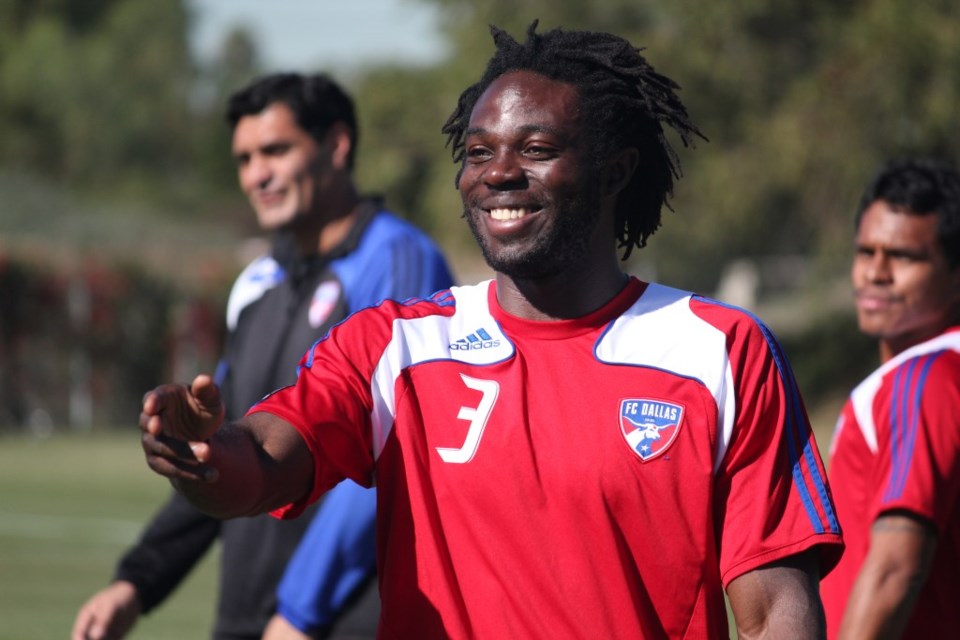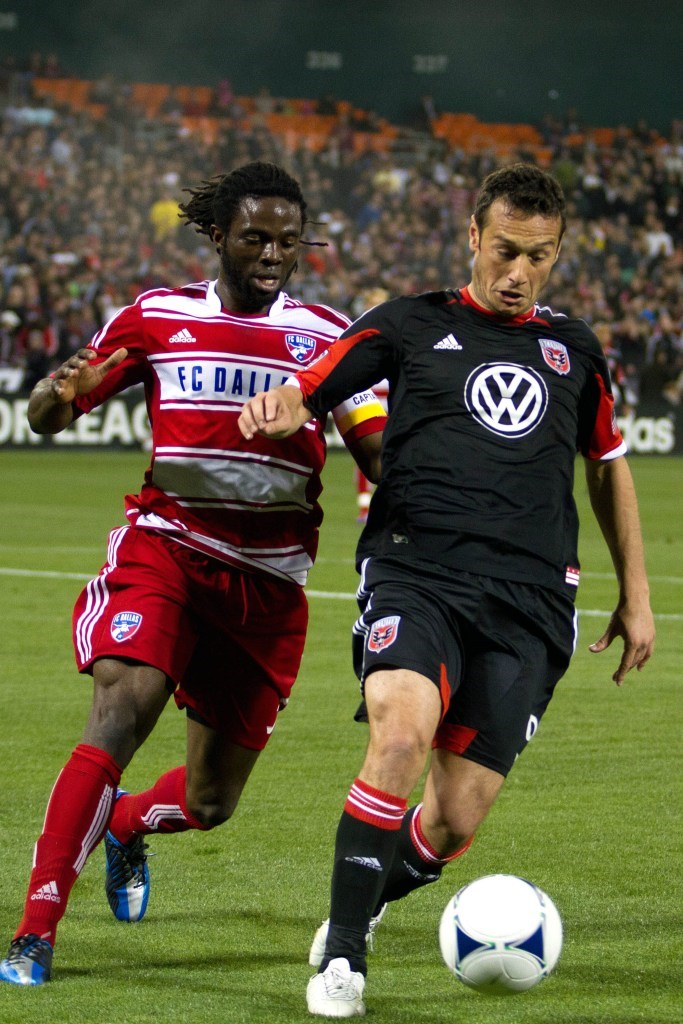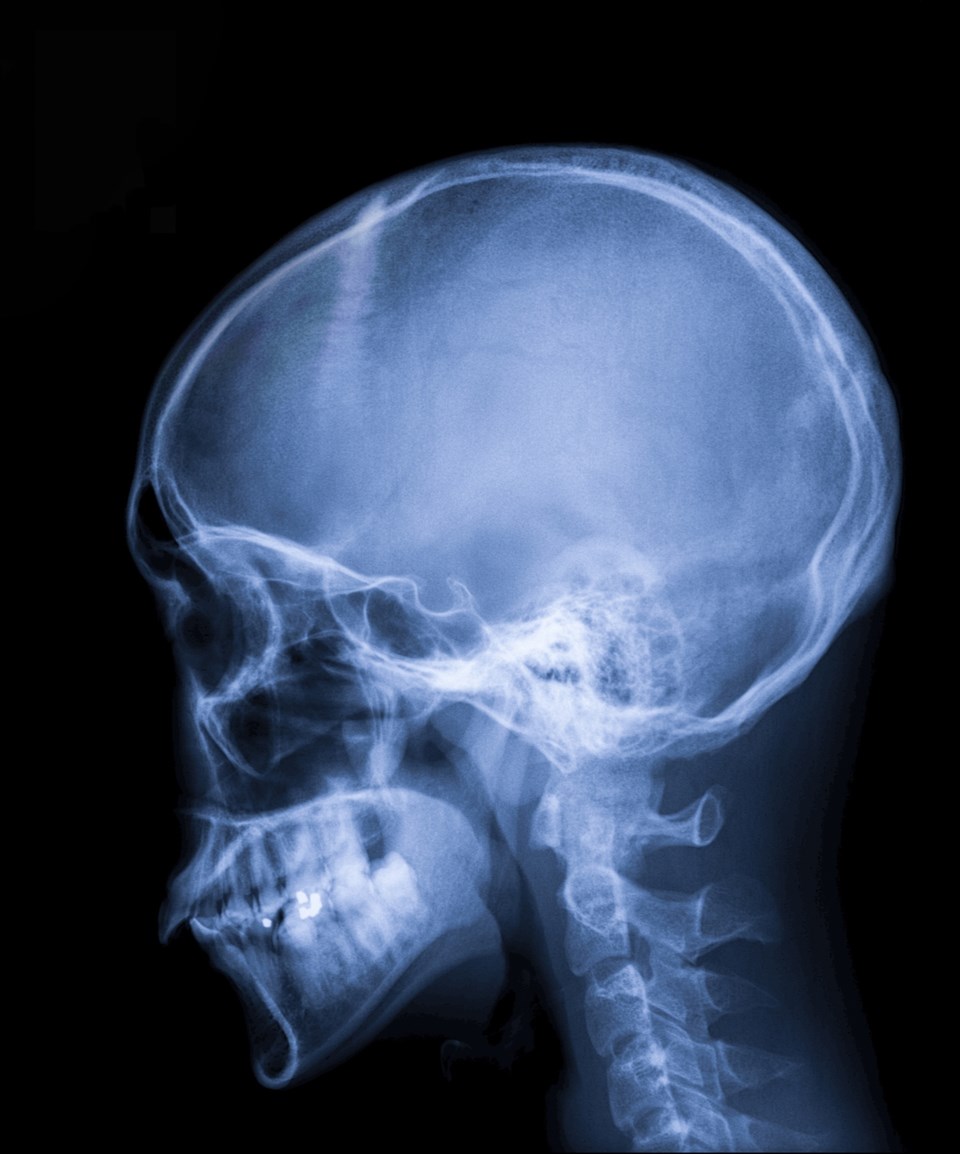“They call it the beautiful game. There is an art to it.” A former FC Dallas defender, Ugo Ehemelu looks the same as he did in 2012. He could still be fresh from the soccer field. “You have so many people working on the same wavelength to accomplish something and create something,” he continues. “Different people have different skills and you find a way to work together.” During his career with FC Dallas, he was a star player. He had lots of shining moments, for example on April 5, 2012, in a game against New England Revolution, when he scored a particularly heart-stopping goal in overtime to win the game. He eventually became team captain with a contract extending through 2015.
“It’s amazing,” Ugo says. “I’ve had experiences where the crowds aren’t too big. I’ve had times where I’ve scored the winning goal at the last second and that energy, that adrenaline is ridiculous. Forty thousand fans clapping and cheering—at a certain point you can’t hear, it’s just noise. It’s energy. It’s pure energy. It’s amazing when that many people come together for something. Music is energy. I’d say it’s the same with soccer. You put so much of your life into being in front of all of those people and performing.”
Ugo was on the rise. And then on May 6, 2012 he sustained a concussion on the field that ended his professional soccer career.
We meet at Houndstooth Coffeehouse in Oak Cliff. He, his wife and their two young children are out on the shaded patio. Upbeat and happy to be there, he has built an amazing life in the wake of his professional soccer career.

Ugo was born in Nigeria and has fond memories of kicking the ball around with family. After a move to Canada and then to Dallas, he was still kicking. He started playing club soccer around age 12 when, as he puts it, his love for the game “took on a life of its own.” When he and his coaches noticed his talent, he figured he should stick with it. He talks about those defining moments with engrossing passion, like the ‘98 World Cup, which he fondly remembers watching.
“I watched the entire tournament. The U.S. National team didn’t perform well in that tournament, but I loved seeing the French team win the trophy. That really made me fall in love with it,” he says. After college, he was drafted to L.A. Galaxy. Then the Colorado Rapids. And before he knew it, he was headed home to play for FC Dallas.
“I didn’t expect it. You always picture in your mind that you’ll come back home towards the end of your career—which I guess ended up being the case for me.” He offers a wry smile. “It was a surprise but it was exciting.”
Ugo remembers North Texas before the business boom. He remembers Toyota Stadium when it was “what was it, Pizza Hut Park?” He had first played there on the opposing team. “Leading up to the stadium, from the Embassy Suites on, it was basically just a dirt road. But then when I got traded back, that whole area was developed. In Dallas there was such a transformation and what’s going on in Frisco, with the Cowboys moving there—it’s amazing. It’s an exciting place to be.”
Ugo’s first documented concussion was sustained when he was playing in college and was hit in the back of the head. “I was back to playing the next week.” He had a concussion in Colorado and two concussions in Dallas. He admits that most athletes can’t be sure how many concussions they have sustained because many go unreported. “You just keep going. As long as you can keep performing, keep moving, you’re okay,” he says. He actually had two hip surgeries while playing professionally.
From a medical standpoint, concussions are a brain injuries induced by mechanical forces—what doctors call twisting forces—of the brain in the skull, affecting its function. Troy Smurawa, Director of Pediatric Sports Medicine at Children’s Health Andrews Institute for Orthopaedics & Sports Medicine, sees them when he works with student-athletes.
“The brain is a highly complex organ that sits inside a hard skull,” Dr. Smurawa explains. “If there is a hit to the skull, the brain sloshes around inside and impacts against the inside. That can cause injury to the brain itself–known as concussions.”
Doctors rely on basic cognitive assessments to determine if a patient has sustained a concussion. But it’s still a scattershoot since symptoms can—but don’t necessarily—include anything from headaches, dizziness, difficulty concentrating, sensitivity to noise and light, nausea, disorientation, blurred vision, irritability, loss of memory, ringing in ears to loss of consciousness showing up at random times in random combinations. Just like no two brains are alike, no two concussions are either.
As for causing permanent damage, Dr. Smurawa says there is no rule. “Sometimes just one concussion is enough.”
As long as Ugo could play, there was no reason to stop. “I’ve always been the type that tries to be balanced in how I live my life,” he says. “You know it won’t last forever, but you can’t think about that when you’re trying to succeed. When I had my last concussion, I was 29. I was starting to get into my groove. I wasn’t thinking about it ending when it did.”
It was a home game against the Colorado Rapids. In a strange twist, Ugo was defending a player who he’d grown up playing soccer against. They’d competed for the position of defender in college and this player had played for FC Dallas before being traded to Colorado—in exchange for Ugo. An accidental nudge caught Ugo at the wrong angle and his neck snapped back.
“I was dazed, but these things happen during games so I kept going,” Ugo recalls. He finished the game, but once he was off the field, he realized he didn’t feel right. He was agitated, comparing it to being buzzed after a few too many drinks.
“I remember it vividly,” he says. “There’s the physical aspect of a concussion but there’s also a mental and emotional aspect. The whole room was spinning, and I felt like I was in a corner in the dark being watched. It wasn’t a good place to be in, and that lasted for a long, long time.”
When he was hit, Ugo didn’t pass out. He didn’t experience memory loss. In fact, two years earlier while he was playing against an international team—against professionals that he grew up idolizing—he was knocked out cold, waking up in a daze, his family crowded around his hospital bed.
“They showed me videos and asked me questions, and I was on repeat basically,” he explains. “I would ask the same questions over and over again. It was nasty stuff.” It took him nearly three months to recover enough to play, but while it put his career on pause, it wasn’t the end and he was soon back in play, good as new.
Part of the problem of concussions is that there is currently no objective test to diagnose them. Concussions are notoriously tricky, not usually appearing on typical imaging techniques like CT and MRI. According to Dr. Scott C. Kutz, a neurosurgeon at Texas Back Institute, while clinical assessments and a doctor’s experienced eye certainly go a long way, there is no definitive test for detecting concussion, and sometimes no assurance that an athlete can return to the field safely.
“A normal person has a car accident or a fall,” he notes. “Usually that’s a one-time event. An athlete returns to the game, where it’s likely that it’ll happen again.”

It wasn’t Ugo’s decision to retire. At first, he was making good progress, but at the end of the season, his doctors requested one more test which required heading, ramming the ball with his head. “That disrupted everything,” Ugo admits. “During offseason, I was offline basically.” He traveled to Europe to keep his mind off soccer and followed his doctor’s instructions to the letter. He did everything right, but when the time came, he couldn’t pass the required tests. His headaches didn’t subside and it was clear to everyone, most of all Ugo, that he couldn’t finish his contract with FC Dallas. His concussions still affected him.
“It’s hard to walk away. It kind of becomes an addiction. Training is hard, but you train so hard, you sacrifice a lot and you get tunnel vision,” Ugo says. Because he couldn’t work out, he reconnected with a college acquaintance who was teaching yoga in Puerto Rico, hoping for a way to stay physically fit and promote healing within himself. Today, they’re married with two kids.
“I can work out again,” Ugo lists off. “I can look at a TV screen. I’m realizing I can’t stare at a computer for very long, but I have to look at it like a challenge and a way to improve myself. My memory is better than it was. I’ve taken on meditation and yoga, and I’ve been eating healthier. That’s all I can control at this point.
“Some bad things happened in my career,” he admits. “But it led to some really good things.” He gestures to his family around him.
Concussions are one of the most hot-button issues in the sports world, particularly now as long-term effects from head injuries are brought to the forefront. Sports became a lot safer, for example, when Tony Dorsett became the most celebrated athlete ever to speak up about the damaging effects he has suffered because of CTE, Chronic Traumatic Encephalopathy, a degenerative disease caused by repeated head injuries.
Doctors who deal with concussions hope that a new blood test could help determine if and when an athlete is ready to go back into the field by detecting certain proteins in the bloodstream that are normally in the brain. This occurs when a concussion disturbs the natural blood-brain barrier. By identifying these proteins in the blood, experts hope to determine how serious a concussion has been sustained and track its healing. Dr. Kutz says while there is some debate about the test’s reliability, it represents a step forward in concussion research: the possibility of an objective, definitive test.
As our understanding of concussions evolves, one thing hasn’t changed: sometimes it all comes down to a single hard knock.




